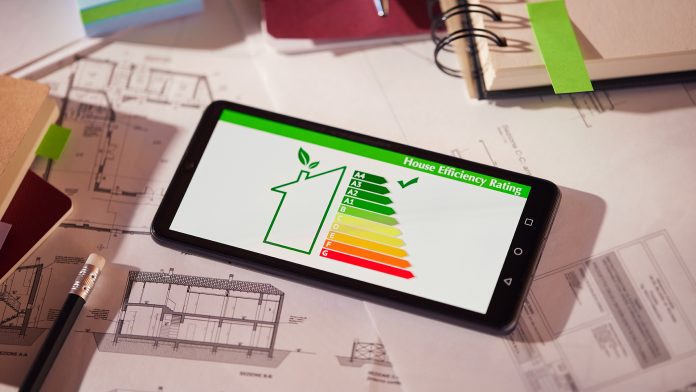Derek Horrocks, owner of Sustainable Building Services and chair of the National Home Decarbonisation Group, discusses the need for home decarbonisation in the UK and how it will contribute to net zero pledges.
There is a golden opportunity in front of us with much more to gain than simply ‘meeting net zero’. Instead of just improving the energy efficiency of homes, we can take the unique step of combining numerous benefits in one swoop, which work together to help achieve net zero while the decarbonisation of homes makes them safer and improves people’s quality of life.
There are some 29 million domestic properties across the UK – including roughly 4.5 million social homes – with a huge majority of these requiring significant energy efficiency and microgeneration improvements.
This being said, the scale of the challenge provides positives as the opportunity is everywhere. The industry is already responding, and it’s up to large-scale specialists like those at Sustainable Building Services (UK) Ltd and other National Home Decarbonisation Group (NHDG) members, the emerging supply chain and housing providers to collaborate and make it a reality.
Attracting new talent and upskilling at scale
With a need for 200,000 competent energy efficiency and low-carbon technology retrofitters by 2030, it’s understandable why confidence and investment are so important. Skills and training remain the biggest barriers to be broken down.
The industry is well aware of the reputation change that needs to happen to attract new people. In part, we need to show what it can achieve – such as how the retrofit and decarbonisation of homes demonstrably transform lives – and the solution providers we are.
Through these works, we are directly helping people with the biggest crises of our time, including the cost of living and energy crises – helping to take pressure off the health service with better living standards, improving health and wellbeing while helping address fuel poverty.
This means we can make construction the most alluring job choice, but to secure those coming in we also have to provide the courses and clear pathways to the qualifications of the future.
Fortunately, as long as they adhere to national occupational criteria, we can develop and shape the specialist courses we need. This can be seen, for instance, in the insulation industry, where there are various routes for obtaining funds and qualifications. The next step is to create clear pathways for people to access the new skill sets as they train in newer expertise fields like retrofit assessment or retrofit coordination, which all work towards closing the skills gap.
As well as sharing the skills and knowledge with those already working in the retrofit decarbonisation sector, we need to engage new talent to expand the workforce, its output, and our ability to tackle climate change, alleviate fuel poverty, and create sustainable green jobs.
Regarding the current workforce, we want to implement a standardised approach to accreditations universally recognised as a stamp of quality on schemes. This will give workers peace of mind that their skills and abilities will be reflected correctly when looking for or securing work. Still, businesses will be better incentivised to upskill employees or bring on new apprentices, knowing that their investments aren’t being wasted.
For some providers, guaranteeing enrolment in specific courses in particular regions can be challenging. This is an opportunity NHDG members – tier one contractors and energy suppliers – can unlock that smaller organisations cannot fulfil. Their ability to commit a certain number of people in their supply chains to be trained in certain skills provides a guarantee for training providers to run courses while also having the expertise to develop new courses and qualifications.

This ultimately increases course viability and develops skills where they are required, which will then cascade down supply chains and have a positive social impact on communities.
Since the retrofit courses we’re discussing are essentially all new skills, we must train the instructors. The challenge is that the people with the right expertise are in incredibly high demand for delivering work and, therefore, are unlikely to walk away from a lucrative opportunity.
Again, the NHDG has great potential to influence change. With 25 members, a wider impact can be felt if each contributed individual is seconded to pass on their specialised knowledge to the training organisations conducting courses. Of course, this expertise exists within smaller organisations, too, but it’s much harder for a team of 30 to second a team member for this task than for a tier-one contractor.
Developing and maintaining policy momentum
While many voices sing the same tune, we’re still en route to a harmonious directive. The great news is that the past five years have seen more government investment in home decarbonisation than ever before. Excellent progress has been made, with nearly 50% of properties in England now having an EPC rating of C – up from just 14% in 2010.
Seeing the government announcement in late 2023 was incredibly promising, which is another positive step towards decarbonising homes up and down the country. The £6bn, initially announced at the Autumn Statement 2022, will be allocated between 2025 and 2028 and benefit the public sector, private owner-occupiers, and landlords.
For example, an extra £1.5bn for the Boiler Upgrade Scheme gives the opportunity to tie this £7,500 offering into whole-house decarbonisation proposals for householders, which, alongside ECO for fabric measures, should create an attractive large-scale offering.
Meanwhile, an additional £1.25bn for the Social Housing Decarbonisation Fund (SHDF) will be match-funded to create £2.5bn in that period. This was something that NHDG members called for in the autumn and will give the industry a longer-term chance to develop the area-based approach and use the economies of scale it affords.
The government has now committed to spend £12.6bn between 2022 and 2028, which is above manifesto commitments and a move that will genuinely make a difference to thousands.
This breeds confidence that had been waning earlier in the year as some green initiatives were watered down. With this level of commitment, the confidence is there to invest in training initiatives that upskill workers and encourage the next generation into construction.
However, the industry can’t rest on its laurels. The national commitment must be maintained and increased, with further investment and more sophisticated training and qualifications being developed. We have to do our part to work with the government to make the most of the funds allocated and show our proactivity and the solutions for the unique problems being faced. In 2024, we know that the NHDG has a huge opportunity to work closely with the government to shape policy through the growing partnership with the Department for Education and the Department for Energy Security and Net Zero (DESNZ).
The opportunity for home decarbonisation lies in collaboration
Undoubtedly, the climate crisis is and will remain the largest challenge we face as a generation, and it likely will be the same for the coming few generations as well. Our actions will drastically affect the future of our planet and everyone living on it. This may seem daunting, but it also offers hope and potential. Because of the momentous importance of this issue, it’s an opportunity to unify and tackle it together.
The message is clear: One coordinated approach to work towards solving a multitude of the UK’s biggest challenges. The industry must continue its trajectory and work together to achieve it while holding ourselves accountable for meeting shared aims.









